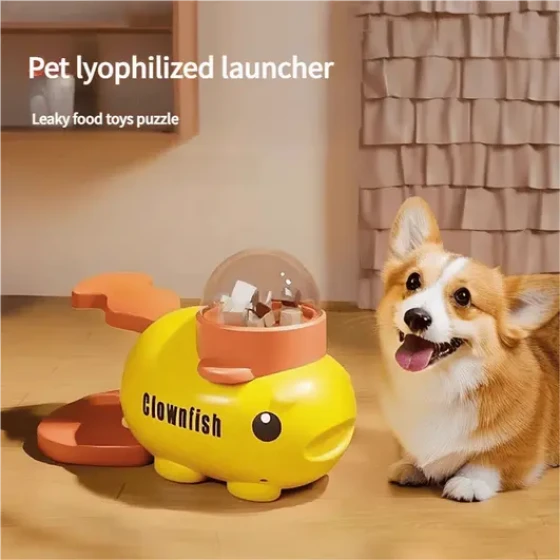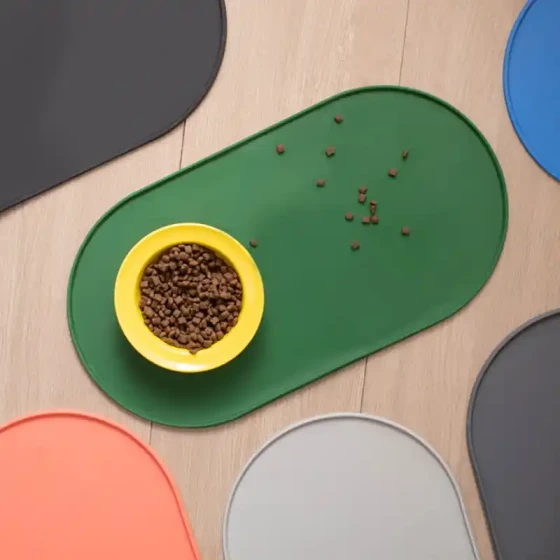How is the benefit of meat donkey breeding, how to breed
Meat donkey breeding techniques:
Explaining the fattening feeding from foal to adult donkey
Donkeys are herbivorous animals with strong disease resistance, easy to feed, easy to manage, fast reproduction, suitable for both free-range and pen breeding, and require low investment, making them very suitable for small-scale farming by households. After short-term fattening in winter, the weight of young donkeys can reach 150–200 kilograms, and adult donkeys can reach 250–300 kilograms.
According to the current market situation, raising one donkey can profit 600–1000 yuan.
1. Selecting fattening donkeys. The first choice is Guanzhong donkeys and Dezhou donkeys. Guanzhong donkeys are mainly produced in the Guanzhong Plain area of Shaanxi Province. After fattening, their weight can reach 250–290 kilograms; Dezhou donkeys are mainly produced in Dezhou City, Shandong Province, and their fattened weight can reach about 260 kilograms.
2. Deworming and stomach conditioning before fattening.
Donkeys should be dewormed and given stomach conditioning 2–3 days after entering the pen and stabilizing. Use "Worm Killer" to eliminate internal parasites. The oral powder dosage is 0.1 grams per kilogram of body weight, and the subcutaneous injection dosage is 0.2 milliliters per kilogram. Stomach conditioning is usually done 3 days after deworming, with 60–100 grams of artificial salt or 450 grams of stomach conditioning powder given orally to each donkey.
3. Fattening feeding for young donkeys.
For young donkeys purchased from other places, training should be strengthened to gradually adapt them to local feeding conditions. Initially, corn, wheat, and other grains are ground into powder and cooked into thin porridge with a little sugar to stimulate their appetite. After a few days, in addition to normal grass feeding, feed 80–100 grams of concentrate daily, gradually increasing later. Approximately 500 kilograms of concentrate is needed during the entire fattening period for young donkeys.
4. Fattening feeding for adult donkeys.
For adult donkeys bought from other places, feed some easily digestible forage like fresh grass and bran first, feed less but more frequently, and feed to about 60–70% fullness each time. Once they eat grass normally, start the fattening period. Mixed roughage during fattening mainly consists of high-quality dry grass, soybean straw powder, and corn stalk powder. The mixed concentrate is generally 50% soybean meal, 30% corn flour, and 20% bran. Feed concentrate twice during the day and only roughage at night, feeding about 80% fullness each time. After about two months, the donkeys can be slaughtered and sold.
Adult donkeys' concentrate and roughage should be selected according to local natural resources and market conditions, such as cottonseed hulls, soybean straw powder, and corn stalk powder for roughage; peanut cake, soybean cake, cooked sorghum, or soybean powder for concentrate. Fat restriction of donkeys' movement during fattening and maintaining clean, dry pens and environment is important.
Experience of meat donkey breeding
1. Pens
For intensive meat donkey fattening, pen raising is preferred.
Generally, pens above can block rain, below can block wind. Feeding troughs should be provided inside the pen, with 60–80 cm feeding space per donkey. Among adult donkeys, firm fences should be set at feeding positions to prevent mutual attacks (especially important for mixed-gender pens).
2. Feed
Donkeys are herbivores. They especially prefer dry, hard, and brittle crop stalks.
For example, corn, millet, and bean vines stalks cutting them into 3–4 cm segments with a chopper. It is forbidden to feed semi-dry but not moist, break-resistant fodder stalks because this type of forage easily causes "blockage" disease in donkeys. Supplement with concentrates like peas, corn, roasted cottonseeds, or wheat bran. Feed once each morning, noon, and evening, focusing on evening feeding. When feeding, offer single grass stalks until donkeys are half full, then mixed grass (stalks mixed with alfalfa and bean vines rich in protein) to stimulate appetite.
When donkeys show signs of stopping eating, feed mixed forage (remaining feed in the trough mixed with peas, corn, roasted cottonseeds, or wheat bran with a little water) to induce maximum intake.
3. Reproduction
Currently, intensive meat donkey breeding is still in its initial stage, so artificially bred meat-type donkeys have not been widely promoted. When raising, choose donkey breeds that are large-bodied, tolerant of rough feed, disease-resistant, adaptable, have good reproductive performance, and high feed conversion.
Breeds like Shaanxi Guanzhong donkey, Shandong Dezhou donkey, Shanxi Guangling donkey, and Yunnan donkey are excellent fattening breeds. Meat donkeys are mainly bred by inbreeding or can be crossbred with horses. Artificial insemination can be used in intensive breeding, collecting quality semen to facilitate large-scale reproduction and accelerate promotion.
4. Breeding
Meat donkeys are more tolerant of rough feed and more disease-resistant than horses and cattle, but this does not mean they won’t get sick.
Especially under intensive breeding conditions, rigidly implement the policy of "prevention first, combined with treatment," and pay attention to environmental hygiene to prevent epidemics. Meat donkeys, like mules and horses, are prone to infectious anemia, glanders, and tetanus. To properly raise meat donkeys, pay attention to the following:
--------------------------------------------------------------------------------
2 Meat Donkey Breeding Technique Summary
1. When donkeys are leaving the pen for feeding, ensure they drink plenty of clean water and never allow drinking polluted or dirty water.
2. Maintain good hygiene in stalls; no overnight manure left in pens; feeding troughs and water tanks cleaned and disinfected regularly. Pens should be built away from villages to avoid disease transmission.
3. Every time the donkey enters or leaves the pen, especially after work, allow it to roll around enthusiastically (as rolling is the best rest method for ungulates) and brush each one individually. This not only cleanses the skin but stimulates blood circulation, improves physiological functions, promotes health, and relieves fatigue.
4. Observe donkeys during feeding carefully. If any donkey shows signs of discomfort or reduced appetite, immediately contact a veterinarian without delay.
5. Mixed-gender pens need to monitor sexual harassment because it can cause miscarriages and injuries leading to tetanus. Hence, the stronger the feeding position partitions, the better for scale breeding.
How to breed meat donkeys? This guide covers it all.
1. Segregate by purpose and individual positions. Feeding should be managed individually by pen based on gender, size, feeding speed, temperament, usage (breeding or fattening). Pregnant mares and foals should have separate feeding places. Lactating mares’ spaces should be wider to facilitate nursing and rest.
2. Feed frequency, schedule, and quantity by season. Adapt daily feed times, feeding schedules, and quantities according to season. In cold winter with long nights, feed 4 times daily (morning, noon, evening, night), and 5 times in spring and summer. In cool autumn, reduce to 3 times daily. Keep feeding times and quantities consistent to avoid digestive disease caused by over- or under-feeding.
3. Feed precisely and frequently top up. Adjust feeding amount and sequence based on consumption conditions per pen. Feed dry grass first, then grass mixed with water. Avoid overfeeding at once; feed small amounts frequently to avoid empty or overfilled troughs. Concentrate feeding should increase gradually while reducing grass.
4. Provide ample water. Supply enough water based on feed type and climate. Usually feed water 4 times daily, increasing to 5 times in hot weather. Avoid rapid drinking which can cause choking and colic. Water troughs should not be too high, and water should be clean and fresh. Warm water in cold weather to avoid drinking cold water.
Four measures for breeding and fattening donkeys
Donkey meat is a typical high-protein, low-fat meat product. It also has blood-enriching and replenishing qi health benefits. To breed and fatten donkeys, implement the following four measures:
(1) Select good breeds. Donkeys in China are divided into three types by size:
Large donkeys include Shaanxi Guanzhong donkey and Shandong Dezhou donkey (Bohai donkey), weighing 250–290 kilograms, with some males over 350 kg;
Medium donkeys include Shanxi Jinnan donkey, Guangling donkey, Henan Huaiyang donkey, Gansu Qingyang donkey, weighing 220–250 kilograms, with some males over 300 kg;
Small donkeys include Henan donkey, Shaanxi Gunsha donkey, Inner Mongolia Kulun donkey, Ningxia Xiji donkey, Gansu Liangzhou donkey, Sichuan donkey, Yunnan donkey, Tibet donkey, Liaoning donkey, weighing 160–220 kilograms, with some males over 250 kg.
Breeds chosen for meat donkeys should grow fast to speed fattening and improve profitability, have large body size for more meat and higher slaughter rate, and be strong with small firm hooves, disease-resistant and good genetics. Medium donkeys are preferred, then large donkeys; small donkeys are more for gelatin production though their meat is sold too. Crossbreeding with good breeds to improve local donkeys is optimal.
(2) Focus on fattening. Donkey houses should face away from wind, toward the sun, dry, warm but cool. Donkeys should be penned according to age, condition, gender, and strength to reduce grazing and feed consumption, aiding fast fattening. The fattening process has 3 stages:
1. Adaptation: Newly purchased donkeys are first dewormed; castration is avoided; penned by sex and weight. At 15 days old, foals start training to eat thin porridge made from mixed corn, wheat, and millet flour boiled with sugar, fed sparingly as a starter. Concentrate feeding begins at 10 grams per day, gradually rising to 80–100 grams by 22 days old, composed of 50% soybean meal with cottonseed cake, 29% corn flour, 20% wheat bran, 1% salt. At 1 month, daily concentrate is 100–200 grams, at 2 months 500–1000 grams.
For new adult or retired work donkeys, start with easily digestible green dry grass and bran. After a few days when eating normally, feed mixed roughage mainly of cottonseed hulls, corn stalk powder, hay, soybean hulls or other green/dry grasses; concentrates of 50% cottonseed cake (or soybean/peanut cake), 30% corn flour/barley/millet, 20% bran.
Feed small amounts frequently, sufficient clean water, and moderate salt.
2. Weight gain: Adult donkeys feed as above. Young donkeys start concentrate 100–200 grams daily, increasing to 500–1000 grams at 2 months, rising monthly to 3.0–3.5 kg at 9 months. Total concentrate consumption about 500 kg in full fattening period. Feeding roasted or cooked cottonseed at 1 kg daily improves fattening.
3. Fattening: Lasts 2–3 months, mainly to bulk fat and muscle. In addition to daily feed, the following fattening methods can be applied:
(1) 100 grams of sugar or 150 grams of brown sugar dissolved in warm water daily for 10–20 days for drinking.
(2) 250 grams pig lard, 1 kg fresh leeks, 10 grams salt fried together and fed once daily for 7 days.
(3) 1 kg roasted cottonseed daily for 15 days.
Adding zinc during fattening can prevent hair loss and skin disease. Pen-raised donkeys must have fixed feeding schedules and amounts, feeding 4 times daily in morning, noon, evening, and night; spring and summer may add another daytime feed; autumn and winter less daytime feed but always night feed.
--------------------------------------------------------------------------------
3 Meat Donkey Breeding Technique Summary
(3) Strengthen management.
Donkey fattening requires stable room temperature; insulation in cold weather and sun exposure to reduce energy consumption; cooling and ventilation to avoid heatstroke and loss of appetite in hot weather. About 1 hour of daily exercise is needed; on rainy or snowy days, light exercise is done in shaded fenced areas. Multiple daily brushings stimulate skin, blood circulation, and remove parasitic lice and mites for healthy skin.
Donkey pens, feed troughs, and water troughs should be cleaned and sanitized daily; disinfect with 3% Lysol every 10–15 days to prevent disease.
(4) Timely slaughter.
After the fattening period, growth slows and feed efficiency decreases. This is the optimal slaughter time. One day before slaughter, provide only water and no feed to induce fasting; feeding at this time affects meat quality.
How to determine the best fattening end point for meat donkeys
1. How to determine the best fattening end time? Identifying the best end time saves costs and ensures meat quality.
Common methods:
1. Feed intake judgment: During normal fattening, feed intake is regular. As weight increases, absolute intake declines. When intake reduces to 2/3 or less of normal, fattening can end.
2. Daily intake based on live weight dry matter. Intake of 1.5% or less indicates optimal end.
3. Appearance: Check fat deposits, amount and distribution. Fatty areas should show obvious, evenly thick fat deposits.
2. When is the suitable initial mating age? Mares develop female traits when mature. Initial breeding weight is approximately 70% of adult weight. Generally, mares are first bred at 2.5–3 years, and male donkeys at 4 years.
3. How to control estrus in mares? Donkeys are seasonally polyestrous, starting estrus in March-April, peaking April–June, reduced during the hot months July–August, stopping by late autumn entering anestrus.
Artificial induction can be used during anestrus by exogenous hormones (like gonadotropins) or environmental stimuli to induce estrus. Usually, injections of gonadotropin or chorionic gonadotropin prostaglandin improve estrus control.
4. When is the suitable mating time? Ovulation occurs 3–5 days after estrus onset, ending 1 day before estrus stops.
Thus, the best mating time is within days 1–5 of estrus, with higher fertilization rates.
Foal feeding and fattening experience
1. Foal feeding
Besides normal feeding, foals at 15 days begin concentrate training, feeding thin porridge made from ground corn, barley, oats with a little sugar to stimulate intake.
Start with 10–20 grams daily, increasing to 80–100 grams within days, 10–20 grams at 1 month, 100 grams at 2 months, increasing gradually to 3.5 kg at 9 months.
Fattening methods for foals include:
① Grind 500 grams each of soybeans and rice with water, mix with 250 grams rice bran and proper salt, feed after grass feeding for 7–10 days.
② 150 grams white sugar dissolved in warm water daily for 10–20 days to bulk up.
③ Roast cottonseed cake to golden or boil till pushover to remove 90% cotton phenol toxicity and add fragrance; feed 1 kg daily for 15 days.
④ Fry 250 grams pig lard, 1 kg fresh leeks, 10 grams salt, feed once daily for 7 days.
⑤ Give 10 mg zearalenone orally daily to increase gain by 12%. Implant 24 mg under ear 100 days before sale to improve gain by 15%.
⑥ Adding trace elements cobalt, iodine, copper, selenium in feed improves utilization and growth; zinc prevents hair loss and skin disease.
2. Adult donkey fattening methods
For newly purchased adult donkeys from other places, feed some easily digestible green dry grass and bran, feeding less but more frequently, at 70% fullness.
After normal feeding, enter feeding introduction. Mixed roughage mainly cottonseed hull or hay. Concentrate mainly 50% soybean or cottonseed cake, 30% corn flour, 20% bran.
Start with small amounts of soybean or cottonseed cake mixed with hay or hulls in concentrate. After 1 week, feed full cake and roughage mix. After 2 months, feed donkeys to 80% fullness.
Generally, feed once in morning and once in afternoon daily. Also ensure water supply, limit movement, brush skin, and maintain hygiene for fattening.
。


